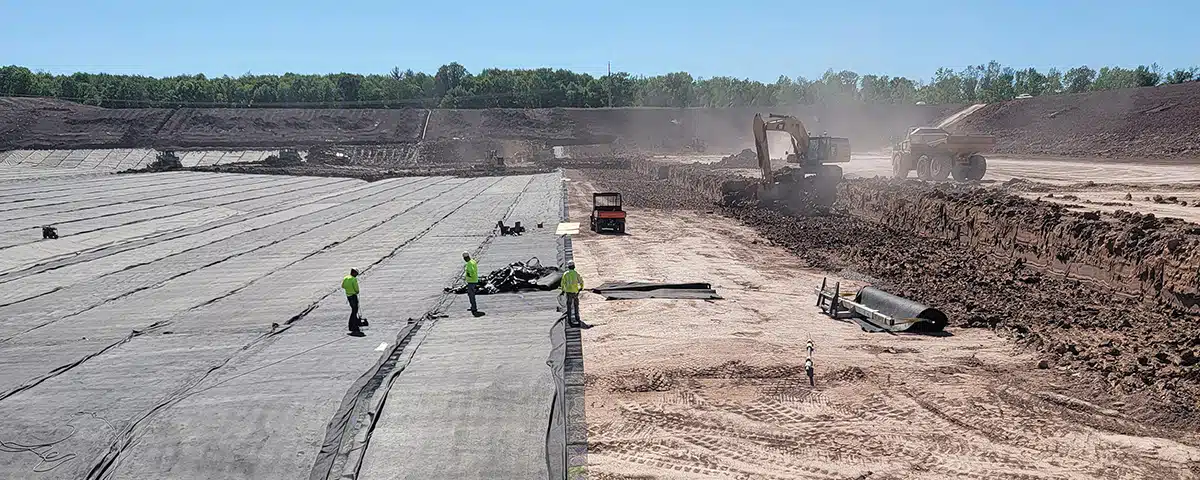+86-159 9860 6917
info@geofantex.com
geofantex@gmail.com
+86-400-8266163-44899
Stabilizing soil is essential for constructing roadways, railways, or any load-bearing structure. Poor drainage and unsuitable materials can cause structural failures, jeopardizing entire projects. With the rising costs of aggregates, many contractors and engineers seek cost-effective alternatives that maintain structural integrity without inflating expenses.
Geotextiles are emerging as a preferred solution. They enable roads and other projects to be designed and constructed similarly to traditional methods but with significantly less aggregate.
Geotextiles separate and stabilize layers of materials, enhancing structural effectiveness. This involves placing good soil over poor soil or aggregate over soil, commonly seen in roadway and railway construction. This approach addresses stabilization issues and supports various projects, including:
- Temporary roadways, such as haul roads, are ideal for geotextile fabric applications.
- Long-term projects requiring soil integrity, like road construction, benefit from a breathable, porous layer that prevents drainage while allowing rock and soil to intermingle. This method extends the road’s lifespan and minimizes early cracking.
- Reinforcing soil beneath geotextile fabric enables it to support high-stretch loads without collapsing, crucial for extending the lifespan of roadways and railways.
- Improving the durability of retaining walls by permitting liquids and gases to pass through, reducing potential damage.
Driveway Fabric for Constructing Driveways
Woven geotextile fabric is ideal for driveways, providing a stable base that prevents potholes and ruts. Its high durability allows water to pass through without damaging the driveway while offering excellent stabilization. Non-woven fabric, on the other hand, acts as a filter but lacks stabilization properties and tends to stretch, making it unsuitable for driveways.
Steps for Installation:
- Prepare the Area: Remove all debris, stumps, and rocks that could tear the fabric. Level the surface, ensuring no curves that could collect water. If necessary, install drainage to manage water retention.
- Place the Fabric: Roll out the fabric on the prepared surface, flattening folds and creases. Overlap the fabric by 1 to 3 inches where needed and secure it with pins or staples. Avoid using stones or heavy materials to hold the fabric in place.
- Add and Compact Aggregate: Spread gravel over the fabric and compact it to a depth of 6 to 8 inches. Trucks and loaders can drive over the fabric, but avoid sudden stops, turns, and starts. Dump and spread aggregate evenly, creating a slight mound for drainage along the driveway sides.

Choosing the Right Aggregate
- For Geotextile Fabric Under Asphalt: Select crushed, angular aggregate with a diameter of one inch and minimal dust content. Limestone is a suitable option, though other materials can also work effectively.
- Quality Aggregate Options: Dense Grade Aggregate (DGA): Designed to include stones no larger than one inch. Avoid rounded aggregate due to its lack of interlocking capability.
Tips for Constructing a Gravel Driveway
- Avoid Soft Ground: Do not spread gravel over soil filled with grass, roots, leaves, or weeds. Remove all topsoil to reach the hard rock layer for a stable base.
- Ensure Proper Drainage: Improper leveling can lead to drainage issues, causing water erosion and surface destruction. To prevent this, place a layer of geotextile fabric between the subsoil and gravel.
- Prevent Gravel Movement: Consider using gravel pavers or retaining walls made of wood, brick, or concrete to keep gravel in place and reduce rutting.
- Choose the Right Gravel Shape: Gravel should be angular and at least one inch in diameter. Avoid rounded pieces as they do not interlock effectively. The top layer should be no larger than a golf ball, and the total driveway thickness should be around 12 inches with layers of varying gravel sizes.
- Compact Each Layer: Compact each gravel layer, approximately 4 inches thick, with pieces smaller than the layer below. Proper compaction maintains the driveway’s shape and stability.
A well-constructed driveway, following these steps and guidelines, will be durable and long-lasting. Proper planning and execution prevent instability and the need for costly repairs. For more information on geotextile fabric, visit the official TenCate website.
Get Free Sample
We’ll respond as soon as possible(within 12 hours)






















